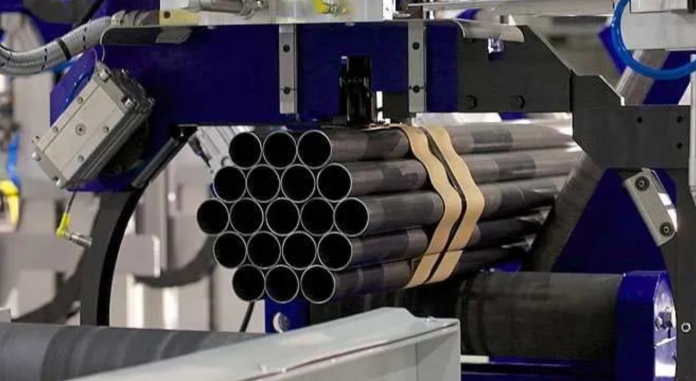As tube and casing sizes have various purposes and specialized prerequisites, experts in the space should know about these differentiations. While the primary reasons for the casing are to balance out the wellbore and confine different stone developments, the tube’s fundamental design is to convey gas and oil to the surface.
The API 5CT chart offers exhaustive boundaries for both, empowering specialists and administrators to choose the right hardware for different boring situations. In light of the API 5CT chart, this article analyzes the differentiations among dimensions and sizes of API 5CT casing and tubing chart in drilling operations and shows why Tuspipe is the ideal decision for the entirety of your gas and oil needs.
Grasping the Distinctions in Casing and Tubing Sizes
Roles of Casing and Tubing
Tubing and cabling are not the same size because of their diverse applications. To reinforce the well’s structure and prevent the walls from collapsing, a massive pipe known as a casing is placed within. It also helps isolate different pressure zones by keeping fluids from moving between subterranean formations.
A much smaller tube is put within the casing to transfer gas and oil from the underground reservoir to the surface. Because these two components perform separate tasks, their sizes and specifications differ significantly. Casing and tube sizes are sorted under API 5CT guidelines as per their external breadth, wall thickness, and grade. Tubing frequently has a more modest OD of 1.05 crawls to 4 1/2 inches, though casing regularly has an OD of 4 1/2 creeps to 20 inches.
Casing Size Breakdown
There are several size categories for casing, and each is chosen for a specific function at different phases of the drilling and well-completion process. The API 5CT chart guides these sizes. The conductor casing is the biggest and is put initially. Its function is to support the well’s opening and prevent loose surface materials from falling in.
These measurements normally range from 16 to 20 inches in OD, with wall thickness changing depending on depth and geological circumstances. Conductor casing installation is followed by surface casing installation, which improves well stability and protects freshwater zones. According to API 5CT, the typical range of OD diameters for surface casing is 9 5/8 inches to 13 3/8 inches.
Intermediate casing is used when a well passes through an unstable formation or a high-pressure location. Intermediary casing sizes normally range in OD from 7 to 9 5/8 inches, according to API 5CT. manufacturing casing is the final layer of casing to enter the manufacturing zone. Production casing diameters usually vary in outer diameter from 4 1/2 to 7 inches, contingent upon the kind of well and its parameters.
Tubing Size Overview
Tubing’s main purpose, in contrast to casings, is to transport hydrocarbons from underneath to the surface. It is installed into the manufacturing casing and is available in smaller sizes. According to API 5CT, tubing diameters typically range from 1.05 inches to 4 1/2 inches in OD. When choosing the appropriate size, factors such as projected production rates and pressure levels are taken into account.
Single tubing strings are the most widely used option for wells with moderate production rates. API 5CT guidelines state that the tube shall have a wall thickness that varies based on operating needs and an OD of 2 3/8 to 4 1/2 inches. Dual tubing strings are fitted in wells that produce from several zones.
Although the OD of the primary tube can be as high as 4 1/2 inches, API 5CT recommends against utilizing secondary tubing with a diameter of less than 1.05 inches. The coiled tubing’s Smaller-diameter, flexible coiled tubing is often utilized for maintenance and interventions. Common diameters in OD vary from 1.25 inches to 2 7/8 inches, per API 5CT.
Why Tuspipe is the Best Choice for Oil and Gas Solutions?
Tuspipe is a reputable supplier of API 5CT-compliant tubing and casing to the oil and gas industry, offering a vast selection. Whatever your needs, Tuspipe has a solution to meet them, be it larger-diameter casing for good support or smaller-diameter tubing for production. Strong, trustworthy, and long-lasting construction ensures superior performance from their products.
Tuspipe places a high value on the caliber of the materials it uses. All of the casing and tube products are made from premium-grade steel and rigorously tested to ensure that API standards are either met or exceeded. By choosing Tuspipe, you can be sure that your drilling operations—whether they are deep or shallow will be supported by pipes that are resilient to the most trying conditions.
Ending Talk
The API 5CT chart is essential for selecting the right casing and tube sizes for oil and gas drilling operations. While casing stabilizes the wellbore and separates deposits, tubing facilitates the flow of hydrocarbons. Choosing the appropriate size, wall thickness, and grade ensures safe and efficient operation. Tuspipe offers a wide choice of API 5CT-compliant equipment and excellent customer service, so you can count on them to provide the finest solutions for your drilling needs.




